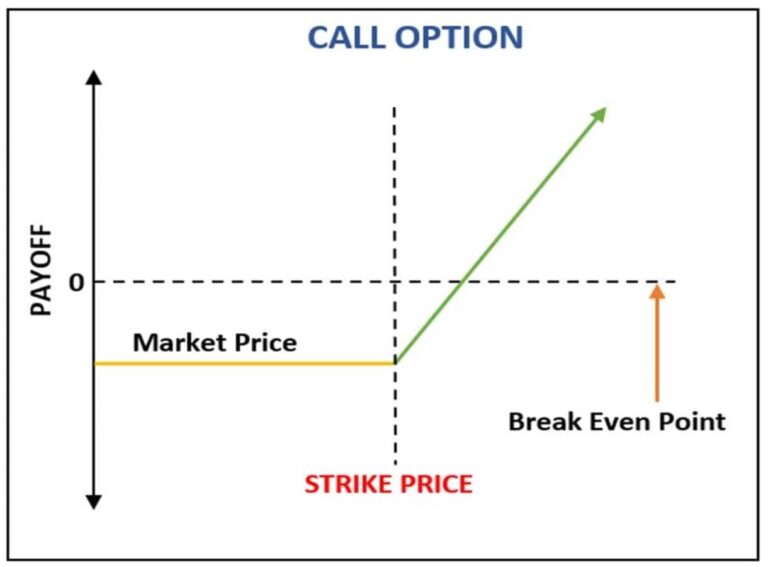Strike price: meaning, how it is determined and more

Strike prices are significant parts of options and derivatives in general. Understanding the strike price is essential for investors and traders who want to engage in options trading or futures contracts.
In this article, we will explore the meaning of the strike price, how it is determined, and its significance in options trading. We will also discuss other related concepts, such as in-the-money, at-the-money, and out-of-the-money options.
What is strike price?
A strike price is a term used in financial markets to refer to the predetermined price at which an option can be exercised or security can be bought or sold.
The basics of strike price in options trading
A strike price is a predetermined price at which an option can be exercised or security can be bought or sold. It is an essential component of options trading and is a significant factor in determining the profitability of an options contract. In options trading, the strike price represents the price at which the underlying asset can be bought or sold when the option is exercised.
When an options trader buys a call option, they have the right to purchase the underlying asset at the strike price, which is usually higher than the current market price. Conversely, when an options trader buys a put option, they have the right to sell the underlying asset at the strike price, which is usually lower than the current market price. The difference between the strike price and the current market price of the underlying asset is called the “intrinsic value” of the option.
The strike price is determined by several factors, including the current market price of the underlying asset, the expiration date of the option, and the implied volatility of the underlying asset. The closer the strike price is to the current market price, the higher the cost of the option will be. This is because options with strike prices that are closer to the market price have a higher probability of being exercised.
The significance of the strike price is crucial in options trading. It can help investors and traders to make informed decisions when buying or selling options contracts. In the following sections of this article, we will discuss in more detail how the strike price is determined and its role in options trading.
How strike price is determined: factors to consider
The strike price is a critical element of an options contract and is determined by several factors. The most important of these factors is the current market price of the underlying asset. In options trading, the strike price represents the price at which the underlying asset can be bought or sold when the option is exercised. Therefore, the strike price must be set at a level that is profitable for the options trader.
Another factor that determines the strike price is the expiration date of the option. The longer the time until the option expires, the higher the cost of the option will be. This is because options with longer expiration dates have a higher probability of being exercised, and the seller of the option must be compensated for this risk.
The implied volatility of the underlying asset is also a factor that determines the strike price. Implied volatility is a measure of the expected price fluctuations of the underlying asset over a given period. When implied volatility is high, the strike price will be set at a level that is further away from the current market price. This is because there is a higher probability that the market price of the underlying asset will move significantly in the future, and the options trader wants to be compensated for this risk.
Other factors that may influence the strike price include market conditions, interest rates, and the type of options contract being traded. Options traders may also use technical analysis and other tools to help determine the optimal strike price for their trading strategy.
In-the-money, at-the-money, and out-of-the-money options explained
- In options trading: the terms in-the-money, at-the-money, and out-of-the-money are used to describe the relationship between the strike price and the current market price of the underlying asset. an in-the-money option is one where the strike price is favourable to the options trader. In a call option, the strike price is lower than the current market price, while in a put option, the strike price is higher than the current market price.
- At-the-money option: one where the strike price is equal to the current market price of the underlying asset.
- Out-of-the-money option: one where the strike price is unfavourable to the options trader. In a call option, the strike price is higher than the current market price, while in a put option, the strike price is lower than the current market price.
The role of strike price in hedging and speculation
The strike price plays an important role in both hedging and speculation strategies in options trading. In hedging, the goal is to minimize the risk of loss in a portfolio by using options contracts to offset potential losses. The strike price of the options contract is crucial in this strategy, as it can determine the level of protection provided by the hedge. For example, if an investor holds a long position in a stock, they may purchase a put option with a strike price below the current market price. This allows them to sell the stock at a higher strike price if the market falls, minimizing their potential losses.
In speculation, options contracts can be used to make bets on the future direction of the market. The strike price is a key factor in this strategy, as it determines the potential profit or loss of the options contract. For example, an options trader who expects a stock to rise in price may purchase a call option with a strike price below the current market price. If the stock rises above the strike price, the trader can exercise the option and make a profit.
Strike price strategies
Choosing the right strike price is a crucial aspect of options trading, and it requires a thorough understanding of market conditions, trading goals, and risk tolerance. When selecting an option contract, traders should consider both the strike price and the expiration date of the contract.
For those looking to minimize risk, choosing a strike price that is close to the current market price of the underlying asset may be the best approach. On the other hand, traders looking to maximize potential profit may opt for a strike price that is further away from the current market price.
Ultimately, the choice of strike price will depend on a trader’s trading plan and risk management strategy. It is important to carefully evaluate market conditions, analyze historical trends, and consider any potential risks before choosing an option contract. By taking a strategic approach to strike price selection, options traders can increase their chances of success in the market.
Conclusion
Understanding the role of strike prices in options trading is essential for both hedging and speculative strategies. Traders must consider various factors such as market conditions, volatility, and expiration dates when selecting the appropriate strike price for their options contracts. By choosing the right option contract and strike price, traders can increase their chances of success in the options market.
Don't miss a thing. Follow us on Telegram and Follow us on WhatsApp. If you love videos then also Subscribe to our YouTube Channel. We are on Twitter as MakeMoneyDotNG.





